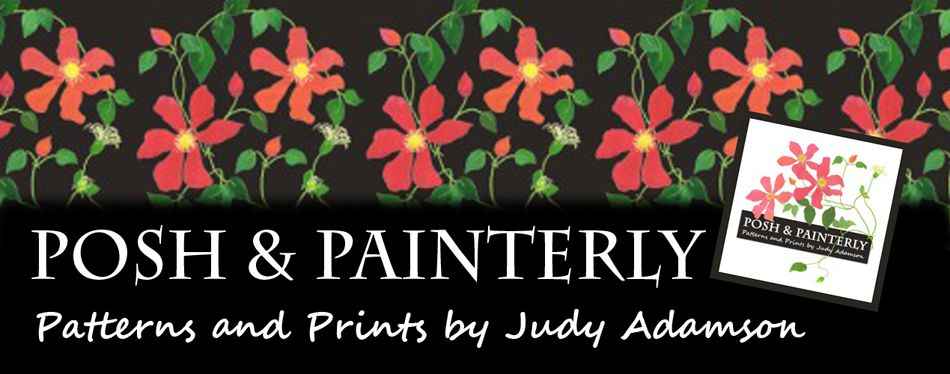As a small child in the 1940s, toys were in short supply, frequently hand-me-downs and often very unsophisticated, compared to what was available by the time my children came along in the ‘60s and ‘70s.
But there was one toy that I loved and it would keep me happy for long stretches – a box of little coloured wooden tiles. Some were diamond shapes, others triangles so they offered endless possibilities for making mosaic patterns.
 In recent weeks I’ve been reminded of that little box of well-worn tiles as I sit, completely absorbed, creating my patterns! I’ve looked for them on the Internet but didn’t succeed in finding them, in spite of them being such a good value toy!
In recent weeks I’ve been reminded of that little box of well-worn tiles as I sit, completely absorbed, creating my patterns! I’ve looked for them on the Internet but didn’t succeed in finding them, in spite of them being such a good value toy!PS Just found some - though I think mine were smaller: http://www.toyjeanius.co.uk/pattern-mosaic-nova-by-haba-4282-p.asp
It reminded me of something I read when I was learning to teach reading and spelling, using Synthetic Phonics. Somebody had written that 'the human brain is wired for patterns’. I certainly feel the truth of that these days; click here for an article about teaching literacy that explains it – note the section on ‘Spelling Patterns’.
If you look for a definition of the word ‘pattern’ – you’ll find several. There are more than enough here!
But I think we most often use the word ‘pattern’ in the sense of there being an original plan, design or model, which can be repeated over and over – such as a ‘dress pattern’ or a ‘knitting pattern’. And then there are ‘patterns of behaviour’ in humans and in nature – again, there is usually an element of repetition that leads us to detect a ‘pattern’. And ordering things into a pattern or discovering a pattern appeals to most of us because it makes things more predictable and that all helps us to feel more secure.
The sun rising in the mornings and setting in the evenings is a pattern – imagine how it would feel to live in a world where that didn’t happen with some regularity!
'To understand is to perceive patterns.' Isaiah Berlin
Noticing patterns and creating patterns does seem to be deeply embedded in the human psyche and it’s been there for a very long time!
Until recently I believed that the cave paintings in Europe were the first evidence of human ‘artistic’ expression but I was wrong. I read in this newspaper article that patterns have been found in Africa on the shells of ostrich eggs that are much older, probably 60,000 years old!
One of my main objectives in signing up for the Surface Pattern course was to learn to make repeating patterns properly. And I’ve been rather disappointed that it was only lightly touched upon in Module 1. To me, the essence of pattern is repetition. I would prefer to call surface designs without repetition ‘decoration’ or maybe ‘ornament’, as in ‘The Grammar of Ornament’, by Owen Jones, first published in 1856!
I was lucky to pick up a copy of this literally ‘weighty tome’ by a Victorian architect quite cheaply some years ago and I always enjoy browsing through it! It begins with designs attributed to ‘Savage Tribes’ – the Victorians had no idea of 'political correctness'! And it continues on through every major civilisation and movement, right up to the Renaissance and beyond.
(I did a 'Google Images' search, hoping to find an image of my huge hardback copy but instead I found images of the patterns contained in the book. So if you are interested in Ethnic or 'Tribal' patterns you’ll find plenty of eye-candy HERE!)
Not being at all excited by the current interest in ‘Mid-Century’ retro design, I fell back on that parallel trend, known as ‘tribal’ for this set of patterns.
I made the two typically Egyptian motifs from painted tissue paper, cut out and stuck to a sheet of white card. And then I made the repetitions digitally.




4 comments:
Really interesting post, Judy. It makes me miss the blocks I used to play with in childhood and inspires me to play with patterns more.
Hi Victoria - glad you found it interesting :)
I'm completely addicted to 'playing with patterns' and I have the feeling that you will be too once you get back to it. Hope to see some on your blog!
Very fascinating blog! I love your Egyptian patterns. You're amazing, Judy!
Hi Carol
Thank you for your kind comments.
Making patterns is 'child's play' compared to the lovely - and meaningful! - art that you create!
Post a Comment